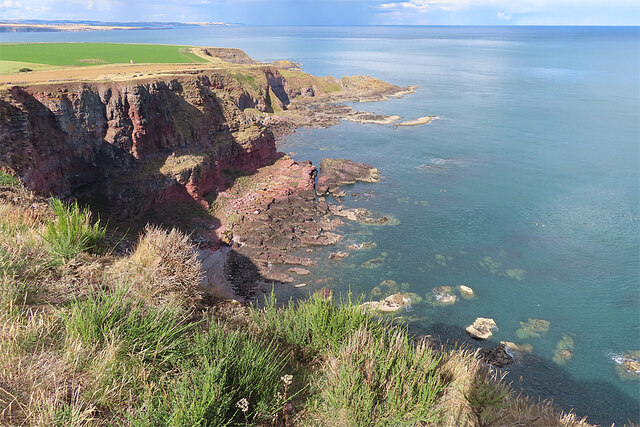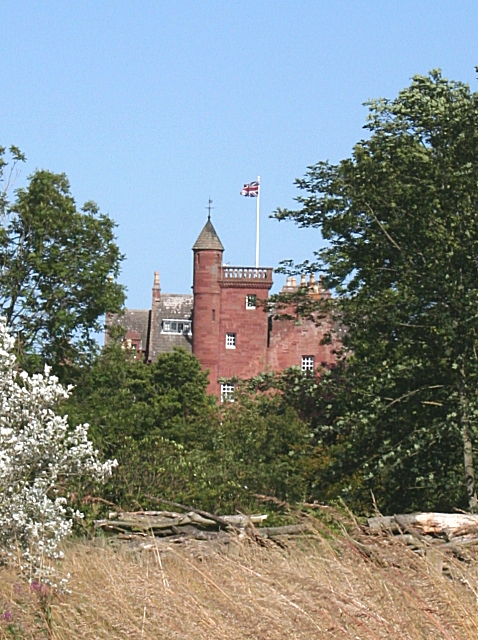Yellow Craig
Island in Angus
Scotland
Yellow Craig

Yellow Craig is a small island located off the coast of Angus, Scotland. It is situated in the North Sea, approximately 5 kilometers east of the town of Arbroath. The island is part of a nature reserve and is known for its diverse wildlife and stunning natural beauty.
Covering an area of around 10 hectares, Yellow Craig is predominantly made up of sandy beaches and rocky cliffs. The island is accessible by boat and is a popular destination for nature enthusiasts, birdwatchers, and photographers.
The island is home to a wide variety of bird species, including puffins, guillemots, razorbills, and kittiwakes. It also serves as a breeding ground for common seals, which can often be spotted basking on the rocks or swimming in the surrounding waters.
Visitors to Yellow Craig can enjoy picturesque walks along the coastline, admiring the rugged cliffs and panoramic views of the sea. The sandy beaches provide a peaceful setting for picnicking and sunbathing during the warmer months.
In addition to its natural beauty, Yellow Craig is also steeped in history. The island is home to the ruins of an ancient chapel, believed to date back to the 12th century. These historic remains add a sense of intrigue and charm to the island's landscape.
Overall, Yellow Craig offers a tranquil and captivating escape for those seeking a glimpse of Scotland's natural wonders and a chance to connect with its rich history.
If you have any feedback on the listing, please let us know in the comments section below.
Yellow Craig Images
Images are sourced within 2km of 56.630109/-2.4839339 or Grid Reference NO7048. Thanks to Geograph Open Source API. All images are credited.





Yellow Craig is located at Grid Ref: NO7048 (Lat: 56.630109, Lng: -2.4839339)
Unitary Authority: Angus
Police Authority: Tayside
What 3 Words
///tourist.dozens.juggled. Near Montrose, Angus
Nearby Locations
Related Wikis
Lunan Water
The Lunan Water is an easterly flowing river in Angus, Scotland, that discharges to the North Sea 11 kilometres (6.8 mi) north of the town of Arbroath...
Ethie Castle
Ethie Castle is a 15,091 square feet (1,402.0 m2) 14th-century castle, situated around 3 miles north of the fishing town of Arbroath in Angus, Scotland...
Red Castle, Angus
Red Castle of Lunan is a ruined fortified house on the coast of Angus, Scotland. It is about 4 miles (6.4 km) south-southwest of Montrose. == History... ==
Lunan, Angus
Lunan is a hamlet in Angus, Scotland, in the parish of the same name, 6 kilometres (3.7 mi) south of Montrose. The hamlet overlooks Lunan Bay, which is...
Nearby Amenities
Located within 500m of 56.630109,-2.4839339Have you been to Yellow Craig?
Leave your review of Yellow Craig below (or comments, questions and feedback).














